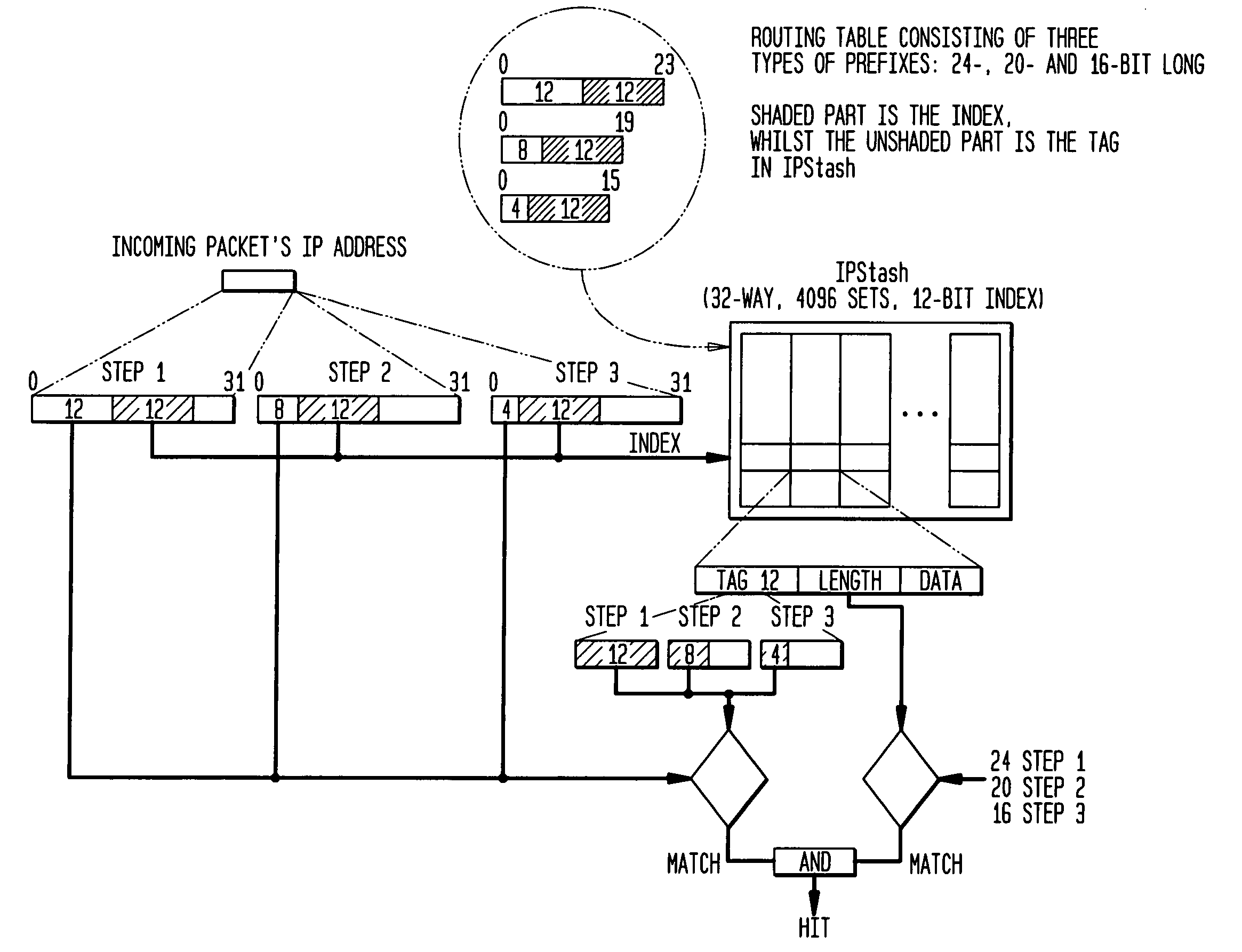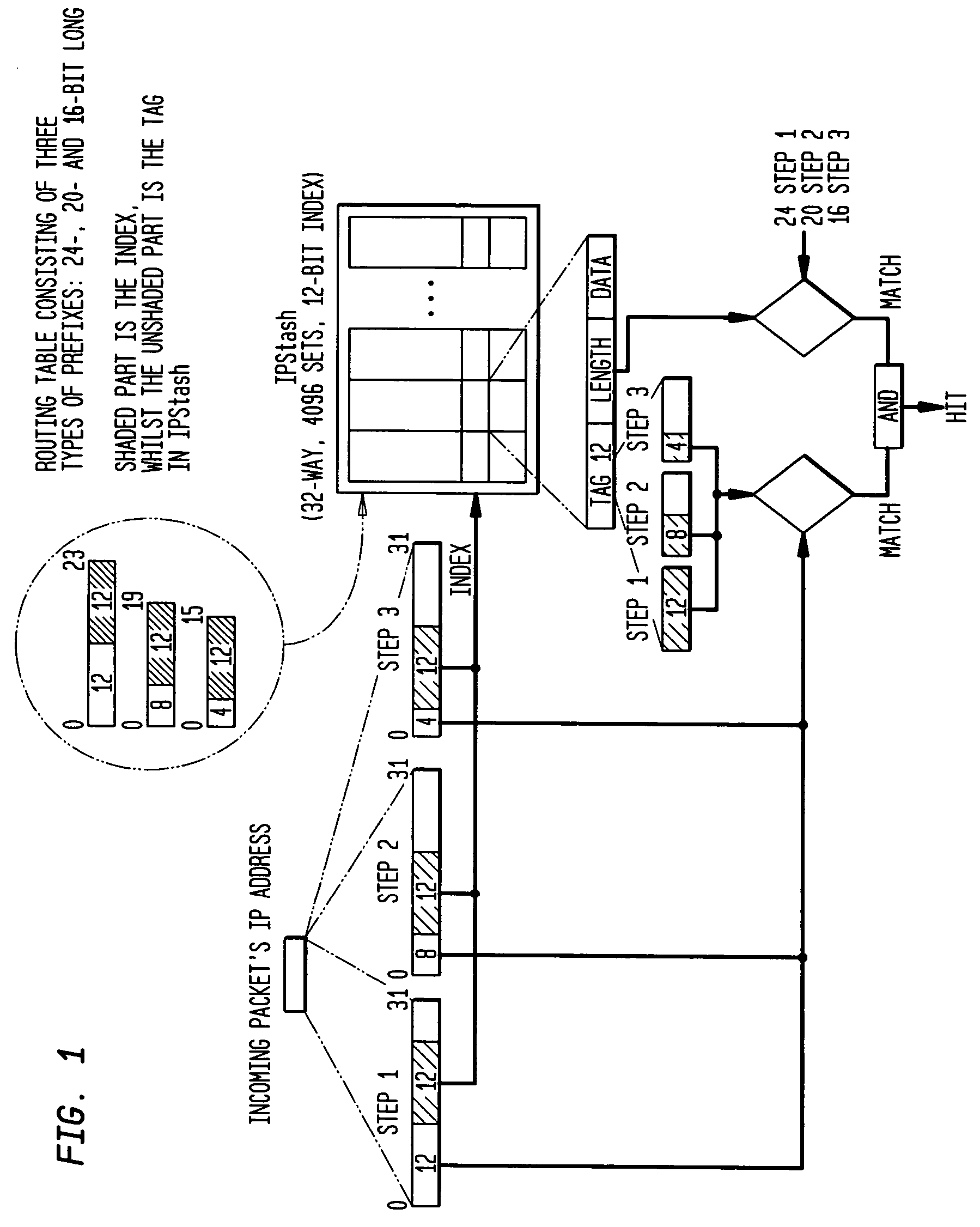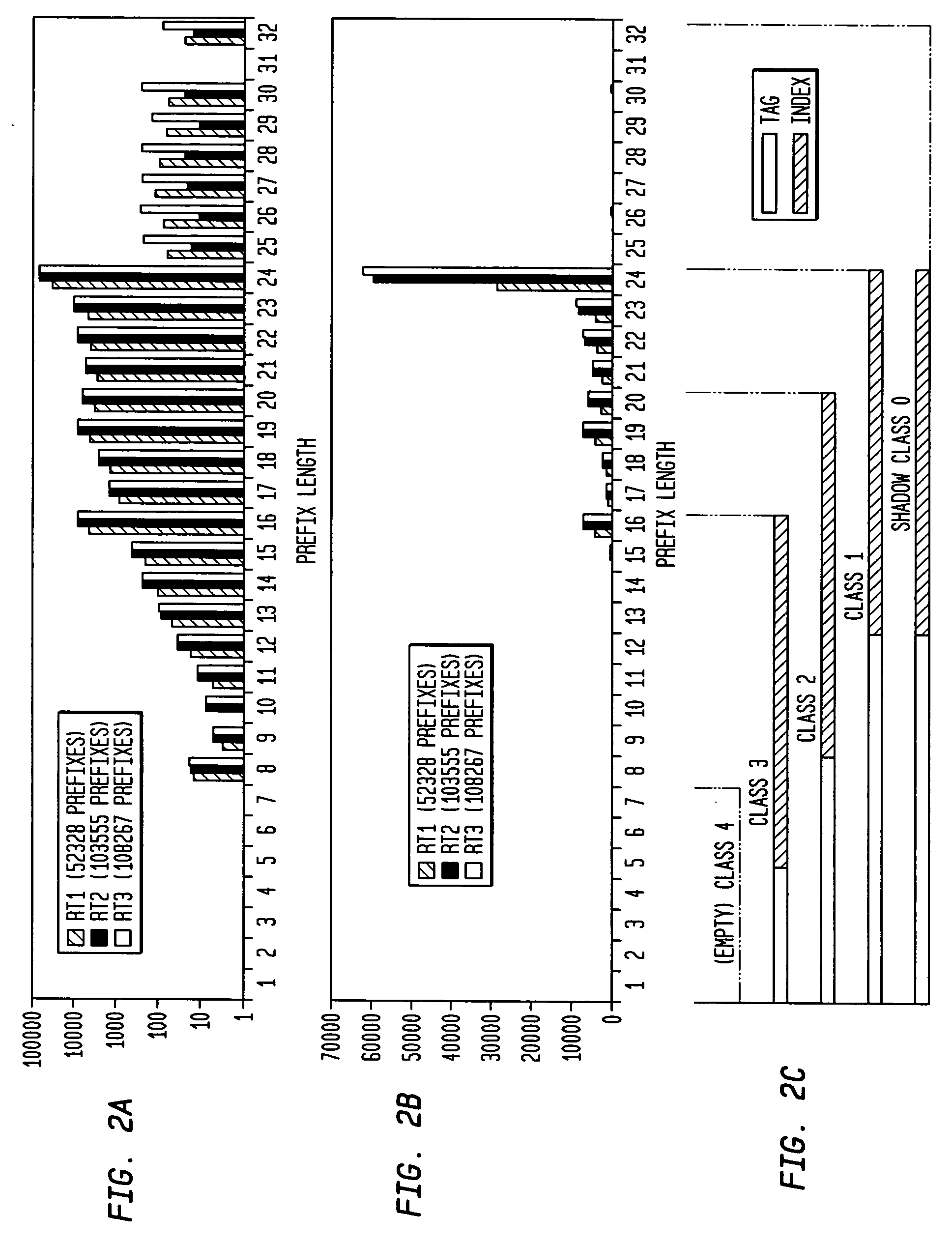Set-associative memory architecture for routing tables
a memory architecture and routing table technology, applied in the field of memory devices for computers, can solve the problems of unclear how ecc can be efficiently implemented in tcams, and achieve the effect of efficient implementation
- Summary
- Abstract
- Description
- Claims
- Application Information
AI Technical Summary
Benefits of technology
Problems solved by technology
Method used
Image
Examples
Embodiment Construction
[0034] Reference herein to “one embodiment” or “an embodiment” means that a particular feature, structure, or characteristic described in connection with the embodiment can be included in at least one embodiment of the invention. The appearances of the phrase “in one embodiment” in various places in the specification are not necessarily all referring to the same embodiment, nor are separate or alternative embodiments necessarily mutually exclusive of other embodiments.
IPStash Architecture
[0035] The main idea of the IPStash is to use a set-associative memory structure to store routing tables. IPStash functions and looks like a set-associative cache. However, in contrast to a cache which holds a small part of the data set, IPStash is intended to hold a routing table in its entirety. In other words, it is the main storage for the routing table, not just a cache for it.
[0036] Longest-Prefix Matching in IPStash
[0037] The concept for longest-prefix matching in IPStash is to iterative...
PUM
 Login to View More
Login to View More Abstract
Description
Claims
Application Information
 Login to View More
Login to View More - R&D
- Intellectual Property
- Life Sciences
- Materials
- Tech Scout
- Unparalleled Data Quality
- Higher Quality Content
- 60% Fewer Hallucinations
Browse by: Latest US Patents, China's latest patents, Technical Efficacy Thesaurus, Application Domain, Technology Topic, Popular Technical Reports.
© 2025 PatSnap. All rights reserved.Legal|Privacy policy|Modern Slavery Act Transparency Statement|Sitemap|About US| Contact US: help@patsnap.com



